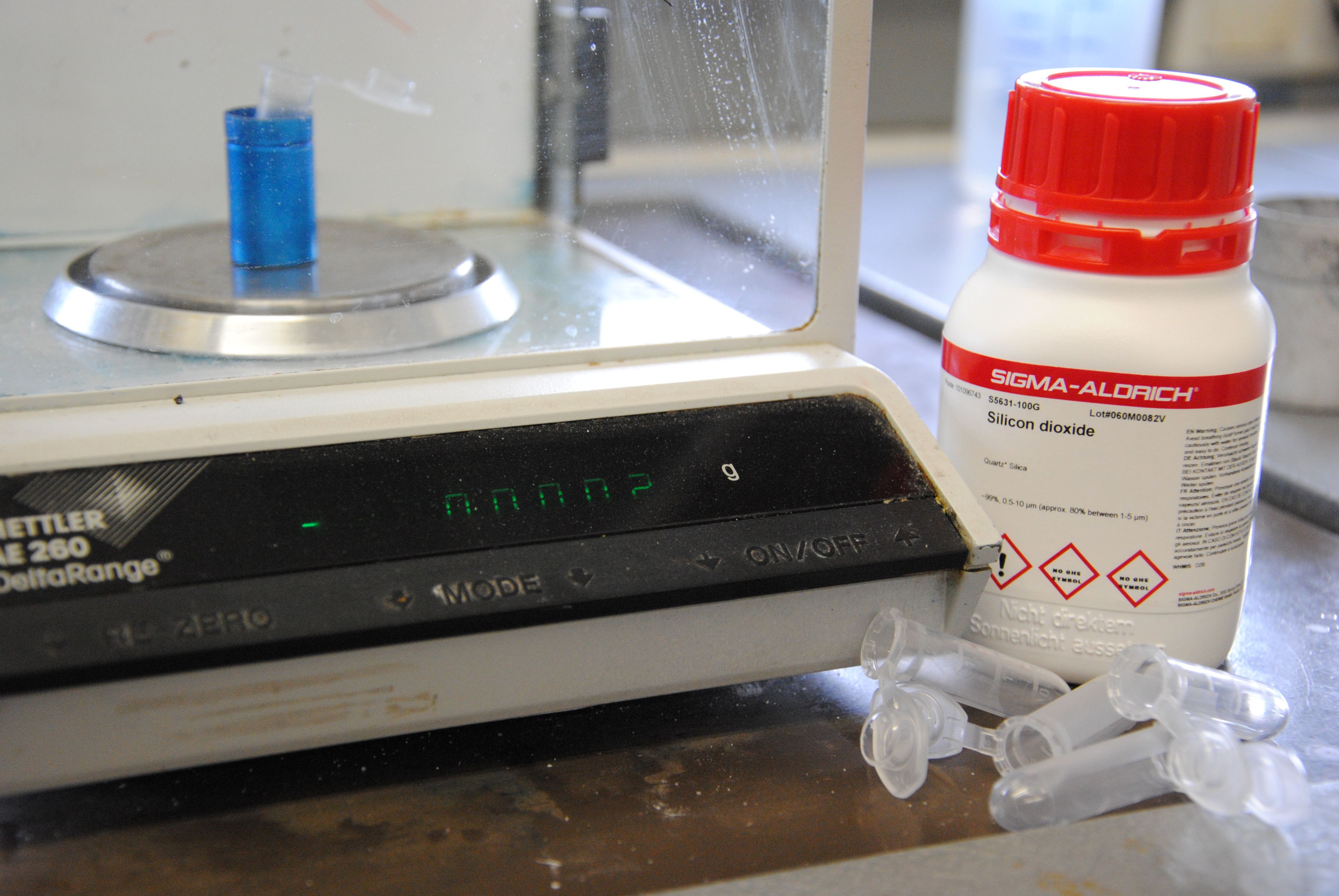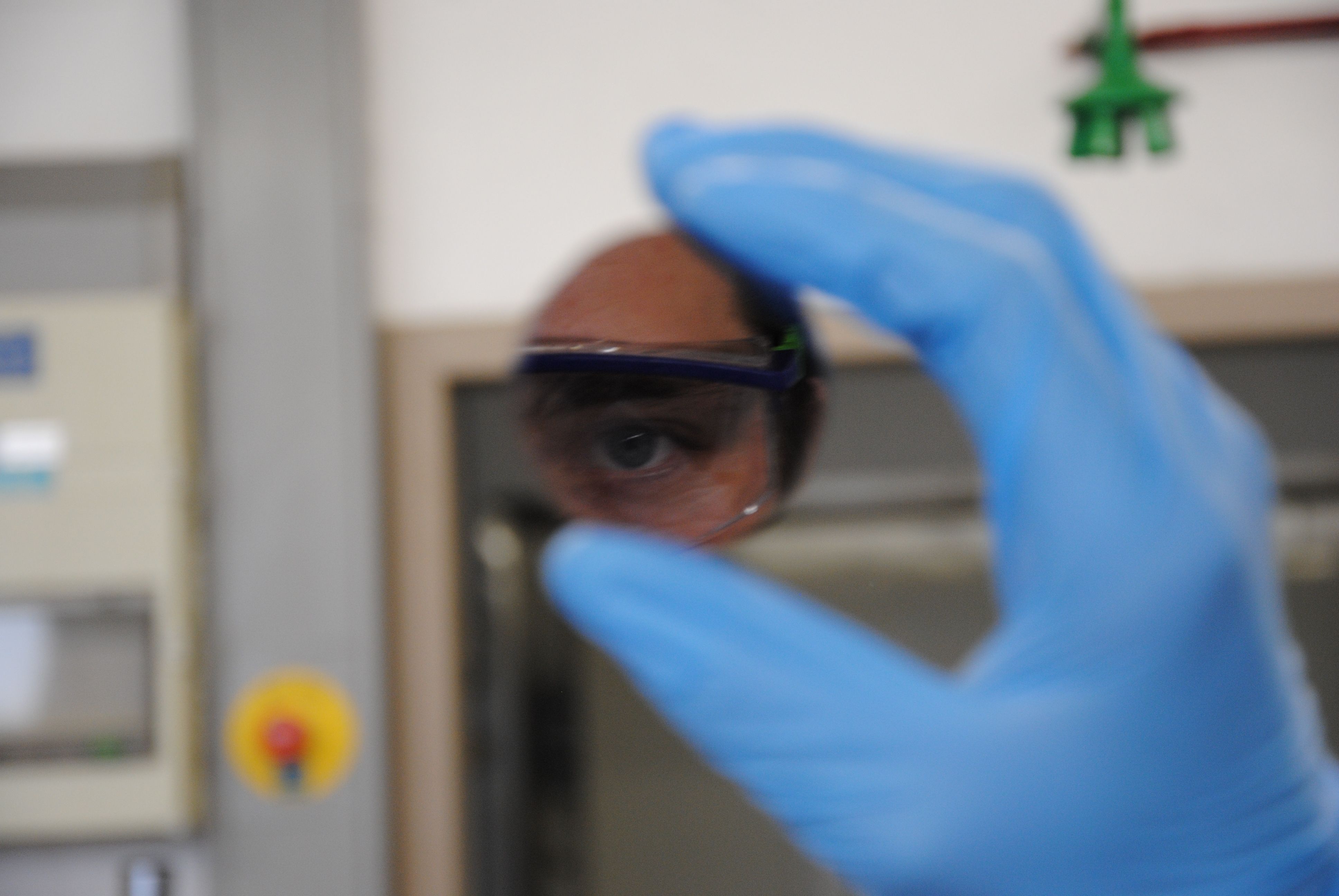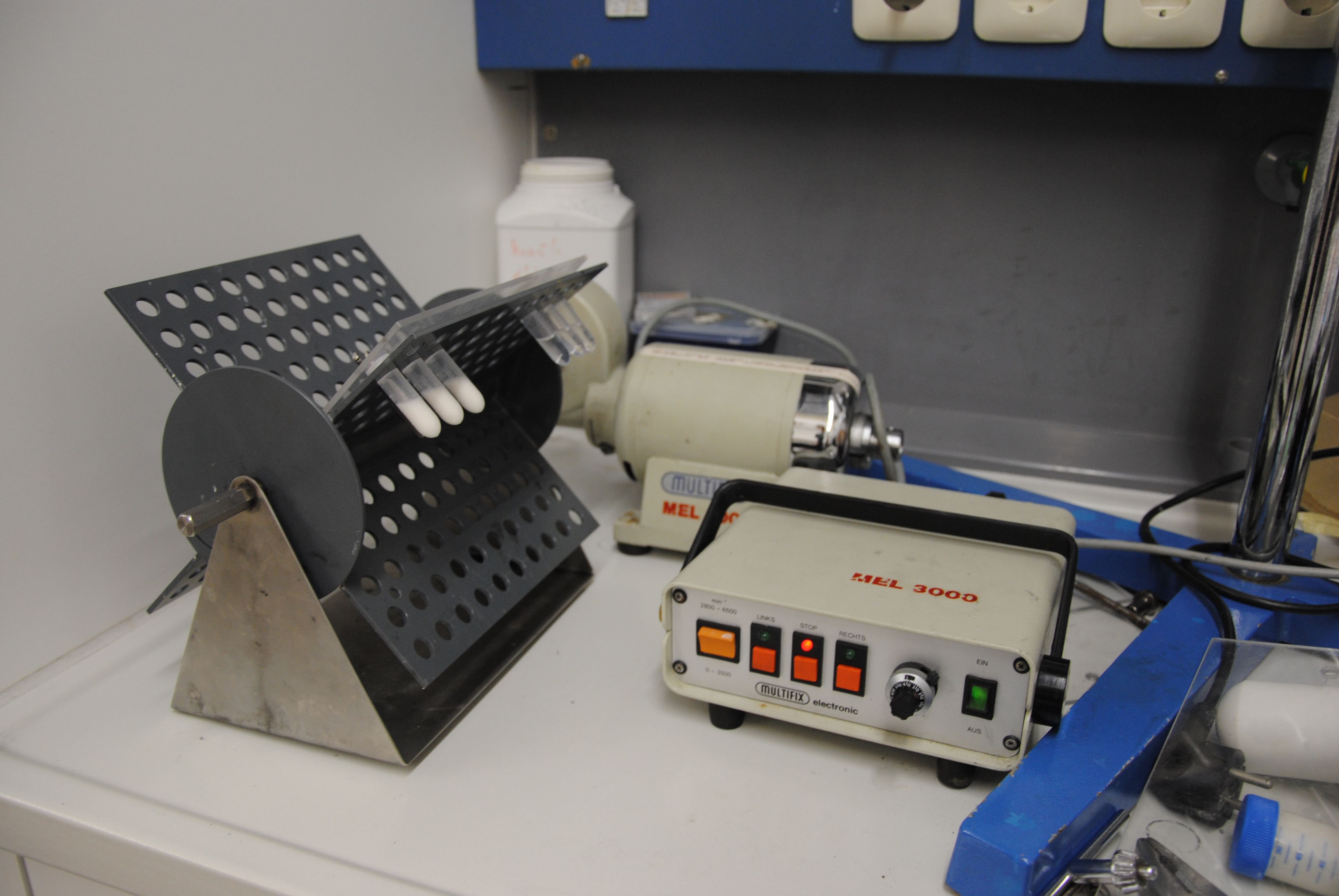Team:Bielefeld-Germany/Results/S-Layer/Guide/7
From 2011.igem.org
| Line 26: | Line 26: | ||
'''Using silica beads''' | '''Using silica beads''' | ||
| - | Weigh in 100 mg silica beads in a 2 mL reaction tube, add 900 µL HBSS buffer (pH 7.4, for SgsE) or recrystallization solution (pH 9.0, for SbpA) and 100 µL of your monomeric solution. You need these buffers because the S-layers we provided only self-assemble in the presence of ions e.g. calcium. Incubate the mix 4 h at room temperature on a vertical rotator. Bring down the beads afterwards by centrifugation, wash them with ddH<sub>2</sub>O and store them in ddH<sub>2</sub>O at 4 °C - finished. Now you have silica beads which are coated with your own functionalized nanobiotechnological surface. This is what we call '''do it yourself nanobiotechnology'''. The methods were developed at and published by the BoKu Wien ([[Team:Bielefeld-Germany/Results/S-Layer/Guide/7#References | view references]]). | + | Weigh in 100 mg silica beads in a 2 mL reaction tube, add 900 µL HBSS buffer (pH 7.4, for SgsE) or recrystallization solution (pH 9.0, for SbpA) and 100 µL of your monomeric solution. You need these buffers because the S-layers we provided only self-assemble in the presence of ions e.g. calcium. Incubate the mix 4 h at room temperature on a vertical rotator. Bring down the beads afterwards by centrifugation, wash them with ddH<sub>2</sub>O and store them in ddH<sub>2</sub>O at 4 °C - finished. Now you have silica beads which are coated with your own functionalized nanobiotechnological surface. This is what we call '''do it yourself nanobiotechnology'''. The methods were developed at and published by the BoKu Wien ([[Team:Bielefeld-Germany/Results/S-Layer/Guide/7#References |view references]]). |
Revision as of 09:22, 28 October 2011

Contents |
Immobilization and recrystallisation of S-layer proteins
You have your S-layer protein monomer solution? Then you are at most five hours away from your nanobiotechnological device - and this only because you have to wait 4 hours for the recrystallization and immobilization of your S-layer proteins. But before you begin...
Choose your surface
S-layers can reassemble on a lot of different surfaces like gold, nylon, functionalized glass or silicon dioxide. We used silicon dioxide because it is cheap and easy to handle. For microscopy we used silicon wavers with a silicon dioxide surface. Then...
Let the immobilization begin
Using silica beads
Weigh in 100 mg silica beads in a 2 mL reaction tube, add 900 µL HBSS buffer (pH 7.4, for SgsE) or recrystallization solution (pH 9.0, for SbpA) and 100 µL of your monomeric solution. You need these buffers because the S-layers we provided only self-assemble in the presence of ions e.g. calcium. Incubate the mix 4 h at room temperature on a vertical rotator. Bring down the beads afterwards by centrifugation, wash them with ddH2O and store them in ddH2O at 4 °C - finished. Now you have silica beads which are coated with your own functionalized nanobiotechnological surface. This is what we call do it yourself nanobiotechnology. The methods were developed at and published by the BoKu Wien (view references).
Silicon wavers
Silicon wavers are not that cheap and not that applicatory as silica beads but a good way to do atomic force microscopy of your S-layers. Using silicon wavers with a silicon dioxide surface: Cut or break the waver into small pieces, place it in a 1.5 mL reaction tube, add 900 µL HBSS buffer (pH 7.4, for SgsE) or recrystallization solution (pH 9.0, for SbpA) and 100 µL of your monomeric solution and wait for 4 h (room temperature). Rinse the waver with ddH2O and store it in ddH2O at 4 °C until use.
References
Badelt-Lichtblau H, Kainz B, Völlenkle C, Egelseer EM, Sleytr UB, Pum D, Ilk N (2009) Genetic engineering of the S-layer protein SbpA of Lysinibacillus sphaericus CCM 2177 for the generation of functionalized nanoarrays, Bioconjug Chem. 20(5):895-903.
Kainz B, Steiner K, Möller M, Pum D, Schäffer C, Sleytr UB, Toca-Herrera JL (2010) Absorption, Steady-State Fluorescence, Fluorescence Lifetime, and 2D Self-Assembly Properties of Engineered Fluorescent S-Layer Fusion Proteins of Geobacillus stearothermophilus NRS 2004/3a, Biomacromolecules 11(1):207-214.
 "
"





